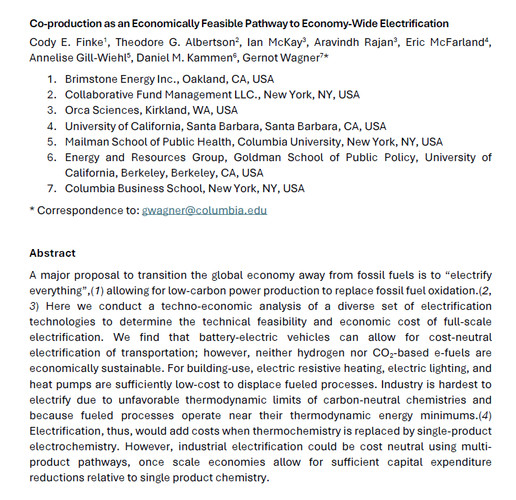Solar Geoengineering To Cool the Planet: Is It Worth the Risks?
by Renée Cho
According to Gernot Wagner, co-founder of Harvard’s Solar Geoengineering Research Program and currently a climate economist at Columbia, the most important and determinative modeling variables are how high up in the stratosphere and where specifically SAI is deployed. Wagner said that if only one hemisphere is cooled, you get “crazy results” such as turning off the Indian monsoon. “The science has more or less coalesced around the idea that you want to be [deployed] somewhere between plus and minus 15 degrees from the equator. And wherever you are around the equator, you want to do the same north as you do south,” he said. “It doesn’t matter which longitude because it will spread globally. By and large, the hundreds of climate models agree that [if SAI is deployed this way] you have more or less a uniform global effect. That means that most of the stuff that we can measure—temperatures, water availability, extreme temperature, extreme precipitation—gets closer to pre-industrial levels with solar geoengineering than without.”
Wagner cited a Harvard paper that modeled a version of solar geoengineering with a slow ramp-up to halve warming. “When modeled in admittedly this idealized fashion, solar geoengineering seems to have these frankly surprising net benefits. The benefits dwarfed the costs by so much,” he said. “It is encouraging in a way that leads me to believe it is worth it to continue doing research.”
This means that a new fleet of high-altitude planes designed specifically for the purpose would have to be built; creating this fleet could take a decade or more. Once the planes are built, SAI could cost $18 billion per degree of cooling each year.
While that sounds like a lot of money, Wagner said the cost is minuscule compared to the potential social benefits. But because the benefits exceed the costs by so much, which would normally lead us to conclude we should go headlong into SAI, a cost-benefit analysis is not the right criterion for making decisions about SAI. Rather, he said, “It’s about weighing the risks of unmitigated climate change—the world we are heading towards—against the risks of a world that also considers solar geoengineering.”
“But even if the risks are large, even if the climate uncertainties are so large as to dwarf everything else, since it seems to be true that solar geoengineering gets us closer to pre-industrial levels of global average temperatures, it should also help us mitigate and understand those risks and uncertainties,” said Wagner.
Wagner believes that a moratorium on solar geoengineering deployment is necessary, but that research should continue. “Basically, you say no deployment above a certain size, and you give permission for research to proceed up to that point,” he said. To ensure these guidelines are followed, high-level formal, legal, regulatory governance agreements to guide solar geoengineering research would be needed. Wagner would also like to see a solar geoengineering organization with a massively funded research program that tries to answer the important questions in a rational way, and that makes the research transparent to inform policy choices that should ultimately be made by democratically elected leaders.
“Looking at climate radiative forcing impacts in a semi-rational fashion ought to lead you to conclude that a modicum of solar geoengineering should be part of the climate policy portfolio, because it does help take the edge off unmitigated climate change,” Wagner said. The portfolio should “include cutting CO2 emissions in the first place, as well as adaptation.” But, he added, “SAI technology is not going to be the sole savior here. That is absolutely clear.”

